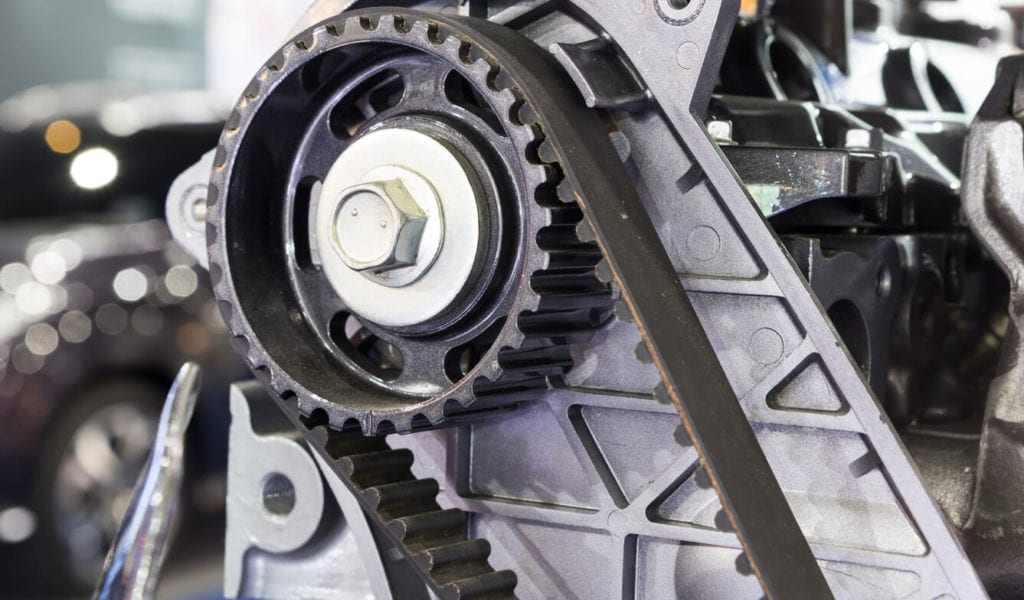 Timing in any situation is important. If you’re playing an instrument, you must make sure the beats played in a measure are equal to the beat of the song. When you miss a beat by playing too quickly or too slow, it can affect the integrity of the song. If you’re playing in a band or orchestra, you won’t be in sync with your bandmates. Similarly, your vehicle’s timing belt is essential to your engine for a successful combustion process. What does a timing belt do in a car? The timing belt is what keeps the crankshaft and camshafts turning so that the valves open and close to create the combustion process, all in perfect harmony.
Timing in any situation is important. If you’re playing an instrument, you must make sure the beats played in a measure are equal to the beat of the song. When you miss a beat by playing too quickly or too slow, it can affect the integrity of the song. If you’re playing in a band or orchestra, you won’t be in sync with your bandmates. Similarly, your vehicle’s timing belt is essential to your engine for a successful combustion process. What does a timing belt do in a car? The timing belt is what keeps the crankshaft and camshafts turning so that the valves open and close to create the combustion process, all in perfect harmony.
What Does a Timing Belt Do in a Car?
The timing belt has notches that turn the camshaft in coordination with the crankshaft. Crankshafts are intended to operate at half the speed of the camshaft. For example, two turns of the crankshaft are equal to just one turn of the camshaft. In addition to keeping time, timing belts are tasked with powering the water pump, intermediate and balance shafts, and the oil and injection pumps. Timing belts need tension in order to perform properly with the use of a timing belt tensioner. Vehicles today are equipped with automatic timing belt tensioners that do not require adjustment; however, older model vehicles would require adjustment from time to time if the belt became loose. Timing belts that are loose are problematic as they force the timing out of range.
How Does a Timing Belt Work?
As part of the combustion process, the intake valves open to allow air and fuel into the cylinders and then close during the compression and combustion phase. The pistons then travel upward to compress the mixture. Once ignition occurs, the pistons are forced back down and move back up to dissipate the exhaust gases through the now opened exhaust valves. The process continues over and over as the vehicle runs. The timing of this process is important. If one of these operations is off, it can affect the efficiency of the engine resulting in a loss of power, misfires, and in some cases an inoperable engine. So where does the timing belt fit into this process? The timing belt is connected to the engine uses a pulley to turn the crankshaft as well as the camshaft to control the opening and closing of the valves.
Timing Belt or Timing Chain?
Initially, vehicles were manufactured with timing chains and they connected the crankshaft and the camshaft but were overhead valves, not overhead camshaft engines. In the 1960s timing belts were introduced and widely used because of the introduction of the overhead camshafts. Now, vehicle manufacturers are turning back to timing chains, though many continue to utilize timing belts as well. Timing belts and timing chains perform the same task but do have minor differences. Timing belts are made of rubber and timing chains are well, metal chains. Timing belts are quieter and less expensive than chains, however, chains do last longer and rarely require replacement. A timing belt, on the other hand, will require replacement somewhere between 60,000 to 90,000 miles. The location of the timing belt and chain differ as well. Timing belts are located on the exterior of the engine whereas timing chains are inside the engine to receive lubrication from motor oil. Refer to your owner’s manual to determine whether your car uses a belt or chain for timing.
When Good Timing Goes Bad
It’s important to have the timing belt inspected to ensure the belt is free from any damage such as cracks, gouges, oily residue, or other signs of wear. A timing belt that is in poor condition is at risk for breaking, which can cause the engine to quit running altogether. When a timing belt becomes loose and detaches, the camshaft stops turning, leaving valves in the open position. This is troublesome because the crankshaft continues turning, making the pistons move up and downward and possibly colliding with the open valves resulting in a bevy of damaged engine components. If you notice any damage to the timing belt or experience any of the symptoms below, be sure to take your vehicle to an automotive service center right away for replacement:
- Check Engine Light On
- Rough idling
- Car Won’t Start
- Misfires
When it’s time to replace the timing belt, also consider replacing the water pump at the same time. The two are located so closely together that though you will be paying for the cost of the water pump, you’ll save on labor fees as opposed to replacing it later. It’s important to note that water pumps have about the same life expectancy of timing belts, so replacing them at the same time is a smart choice. Replace your timing belt every 60,000 miles to ensure your engine continues to work in perfect harmony.
